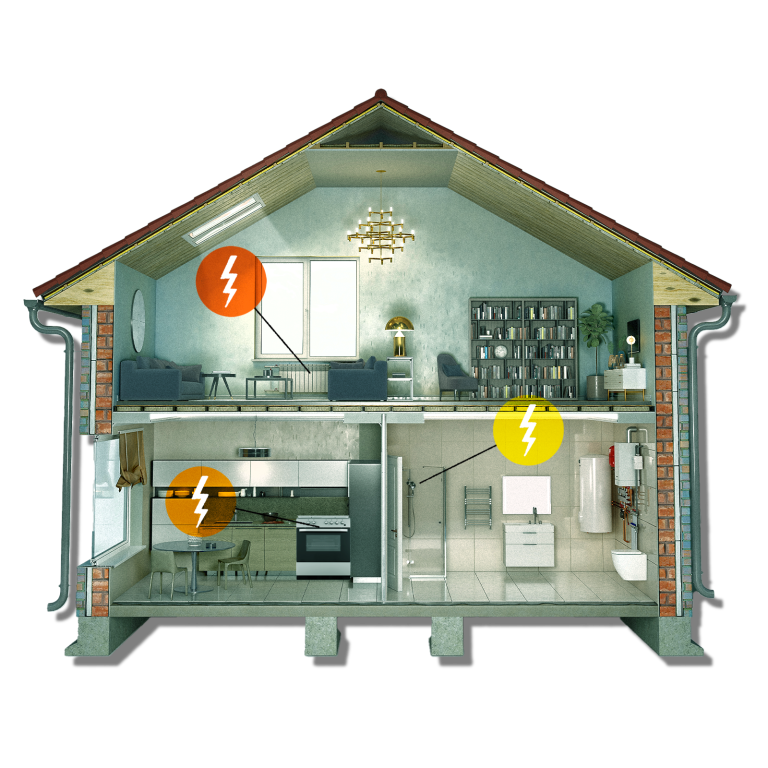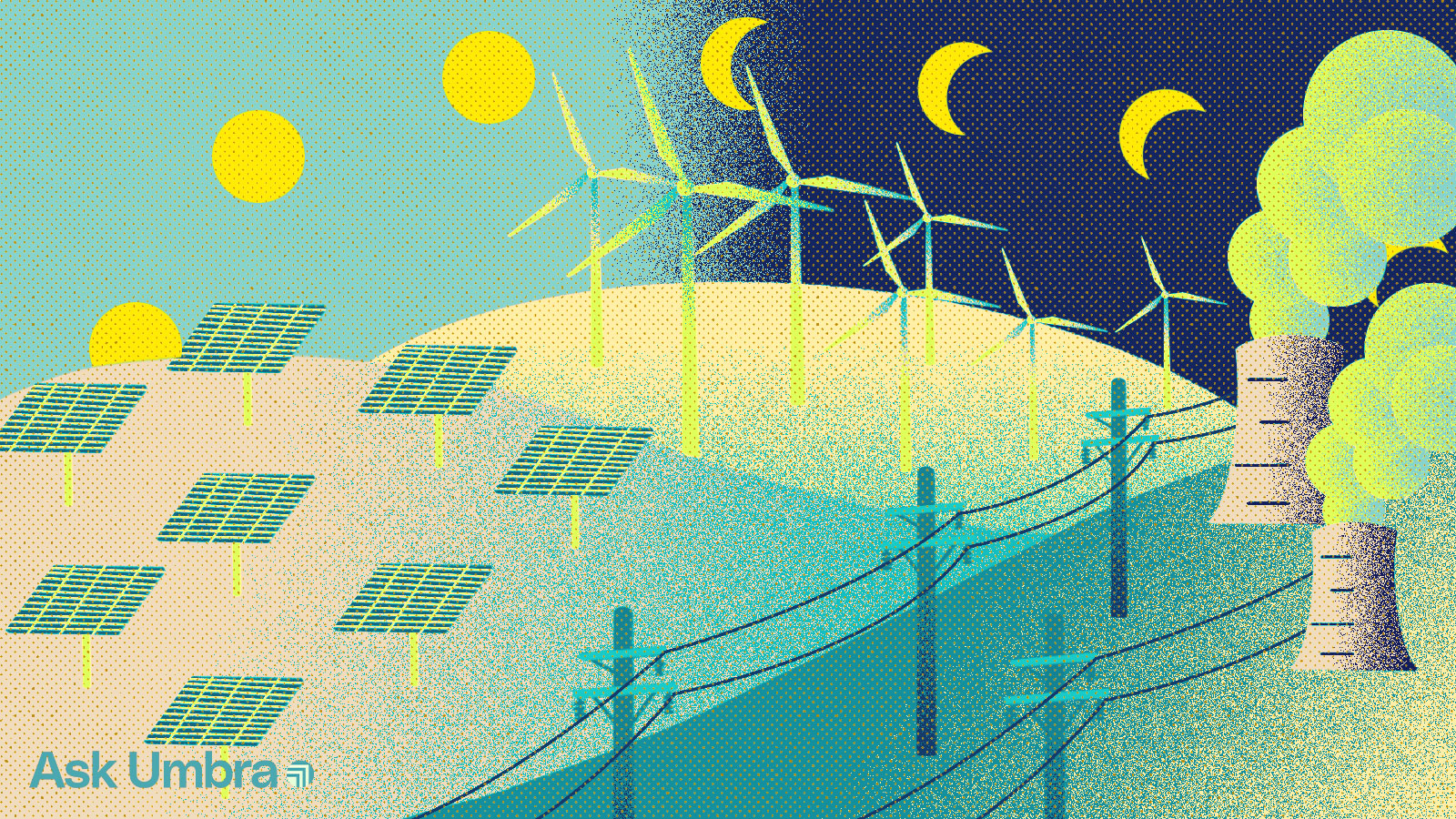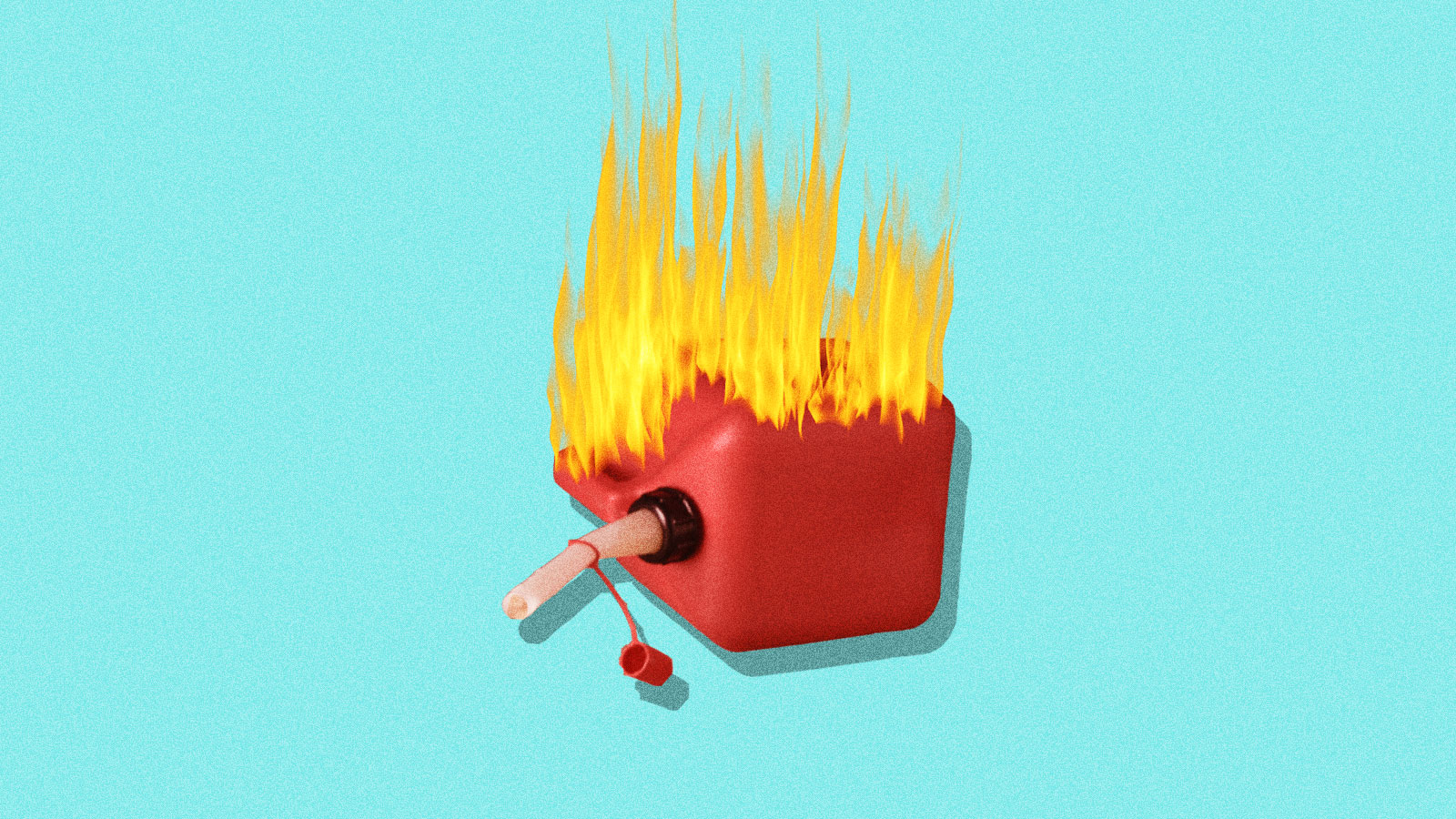Dear Umbra,
I live in California and I just got a notice from my utility company that they’re going to charge more for usage between 5 p.m. and 8 p.m. Do rate surges really help the planet, or do they just make companies money?
— What Are These Tricks?
Dear WATT,
Your skepticism is understandable, because utility companies have not inspired a lot of public confidence in recent years: Texas’s deadly winter blackouts, California’s power line-sparked wildfires, and, ahem, Flint, just to name a few of the more egregious disasters. But there actually might be a planetary benefit behind your electricity provider’s proposal. And it’s one that requires you to consider some decidedly dull questions (hey, those are the backbone of decarbonization, baby!) like, does the electricity you use to power your dishwasher come from a wind turbine or a natural gas power plant?
The answer, in the case of most households, is a mix. We want to meet our electricity needs while creating as few emissions as possible. That is why we’ve developed technology to harness cleaner sources of energy like waterfalls and wind and sun. But those can be a little fickle: Wind can die down, and the sun can hide behind clouds. And in the case of California’s solar-heavy grid, notably, the amount of sunlight starts to wane in the late afternoon — just as people get home from work and start going about all their electricity-hungry activities: cooking, heating, cooling, watching TV. By the time demand is highest, the sun-starved grid has to lean more heavily on less climate-friendly sources of electricity-generation, like natural gas and coal. (This unfortunate phenomenon is often referred to as the “duck curve.”)
The clean-to-dirty fuel source switch is something many metros are grappling with as they rethink their grids, because the transition to green energy is hardly snap-your-fingers-fast. Even as states like Iowa and yes, Texas get most of their electricity from renewable sources like wind, there’s some need to fall back on dirtier natural gas or coal power plants to fill in the gaps.
“We have historically thought of demand for electricity as static, and we will run a power plant to meet that demand — it’s a one-way street,” says Ben Serrurier, a manager with the Carbon-Free Electricity Practice of the Rocky Mountain Institute. “As we add more wind and solar, we have a little less control over when those plants run. We can predict it and forecast it, but we can’t be a one-way street anymore in that we also have to get more flexible and smarter about how we use electricity.”
Ostensibly, rate hikes during “peak use hours” are a useful climate tool: It’s easy to see how charging extra for power provides an incentive for households to use less electricity during those times of day. Which only goes to show you that the more you learn about the major factors contributing to climate change, the more you realize how difficult it is to actually differentiate between individual and systemic responsibility.
Now, if you’re nervous about the prospect that the planet’s future depends on when you run your space heater, allow me to absolve you of some of that responsibility: Most of the onus for reducing electrical emissions still falls on how your local government and utilities want to sort out the available energy mix. To understand why, I’m going to give a very simple explanation that definitely ignores some specifics of all the different regions and municipalities of our fair nation, but you’ll hopefully get the basic gist of it.
On the one hand, energy that comes from wind, solar, hydropower, and nuclear doesn’t cost much to generate, because once the necessary infrastructure and facilities are up and running, they’re mostly self-sustaining. Electricity produced by coal plants and natural gas plants is a different story; they’re expensive to operate, and natural gas plants in particular run a wild gamut of efficiency.
“Wait, what?” you might be thinking. “I thought the whole issue with the energy transition was that wind and solar cost more than fossil fuels!” Well, there are a whole ton of coal- and gas-powered plants already built, and that sunk cost is rarely taken into account when compared to the cost of rigging up all-new turbines and solar farms. Your monthly electricity bill actually has two components: a fixed rate, which covers the maintenance — and construction — of energy infrastructure; and a volumetric rate, which charges a certain amount for every kilowatt-hour you use.
And another variable in this electricity pricing mess is that fixed rates are actually increasing! Fossil fuel infrastructure is aging and requires more maintenance — or replacements with cleaner alternatives — and both of those fixes are expensive. But rates are also going up because of climate change, as extreme storms and heat waves wreak havoc on power lines. At the same time, the volumetric pricing of electricity is dropping all over the country as greener, cheaper sources take over the grid.
But let’s pull out of that particular rabbit hole and get back to your question. Utilities that pull from a variety of energy sources favor the cheaper (renewable) stuff when they can get it. They pull from the more expensive, more polluting ones when the renewable sources aren’t meeting demand. It’s easy to imagine a couple of reasons for that deficit. In the case of solar and wind, weather conditions might not allow for panels or turbines to produce enough power; or, on the consumer side, the problem might be that the sheer demand on the grid is high enough at a specific time that even if all the greener sources of energy are pulling their full weight, utilities still need to bring in extra from dirtier, more expensive sources.
So to answer your question, no; the “surge pricing” you’re seeing on your bill is not unnecessary gouging by your utility. It’s probably a way to try to persuade you to lift a little burden off the grid so it doesn’t have to lean on more carbon- and pollution-spewing power plants. But you can quickly see how any pricing policy like this carries quite a bit of justice baggage with it. Sure, some people can afford to shift around their schedules to make sure they’re doing all their heavy-electricity activities during the cleanest-energy hours of the day, but having that kind of freedom is usually tied to having job and/or life flexibility, which is not the case for many low-income households.
That dilemma echoes the inequity we’ve seen over and over during the COVID-19 pandemic: The people with white-collar jobs and the freedom to work from home (however hellish that isolation has been) are not as imperiled as those in lower-paying service jobs, who have to physically go into work every day. One option to address that, suggests Joshua Rhodes of the Webber Energy Group at the University of Texas Austin, would be to offer an opt-in peak-hour pricing system that people who actually have the flexibility to use could take advantage of.
So it’s worth doing a bit of sleuthing to see if your provider might have a few time-of-use plans or standard pricing systems to choose from. If that’s the case, look back at your past utility bills to figure out what that might mean for your current electricity use. It could also be worthwhile to look into smart, energy-conserving appliances that switch off automatically when they’re needed, or are able to time their functioning around low-burden hours.
There is enough to worry about in a day without planning your laundry cycle around your utility’s price schedule — I get it! And I also understand how futile such an effort might feel in light of the current utility company monopoly in most regions. But until policies change or battery technology gets way better, this truism applies: If you’re on the grid, you’re on the hook to try to make it a little better for everyone else who shares it.
Electrically,
Umbra





